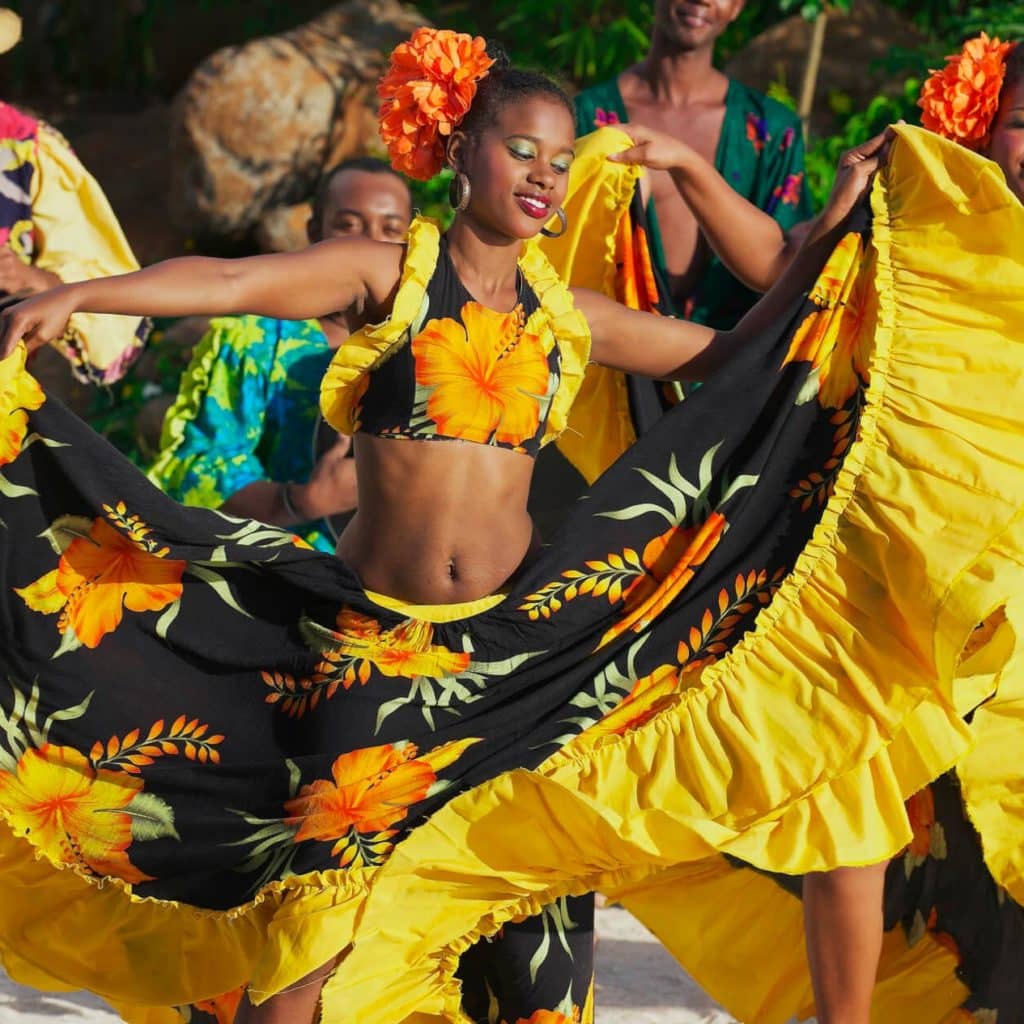Cultural tourism in the Indian Ocean islands: local history and culture
A trip to the Vanilla islands is an immersion in the heart of traditions as rich as varied. A cultural, gastronomic, and musical discovery. We propose you today to learn 9 facts which participate to the singularity of the the Indian Ocean’s jewels.
1. Mayotte is also known as the island of perfumes
While strolling in the streets of Mayotte, you will probably smell the scent of ylang-ylang (“flower of flowers” in English). The name may not mean anything to you, but you surely know its fragrance. Cultivated since the beginning of the 20th century, its essential oil is indeed very appreciated by the greatest perfumers: Chanel n°5, Arpège de Lanvin, Terracotta de Guerlain, and many other perfumes contain these flowery notes. Let yourself be tempted by a visit to the plantations to dive into the heart of these intoxicating scents.
2. The Vanilla islands: two dances on UNESCO’s World Heritage List
Head to Mauritius to dance to the wild rhythm of the Sega. This traditional dance is an integral part of Mauritian culture. From the colorful dresses to the typical musical instruments, let yourself be carried away by its colourful lyrics. If this dance has become one of the most festive, it was initially practiced by slaves, and transmitted from generation to generation. A true heritage of this past, the Sega is now part of the Intangible Cultural Heritage of UNESCO.
But the Sega is not the only dance to have integrated the famous list. In Reunion Island you may discover the Maloya. Its name comes from the Malagasy word “maloy aho” which means “to speak”. Indeed, it was originally practiced by slaves of Malagasy and African origin, in order to transmit the anger that rose in the sugar plantations. The discipline has been transformed over the years by multiple influences, such as poetry, slam, or reggae, to become the joyful and lively rhythm we know today.
3. In the Seychelles, the painter Michael Adams decorated by the Queen of England
Born in England, the painter Michael Adams settled in Seychelles in 1972, captivated and inspired by the paradisiacal atmosphere of the place. Today he is a true emblem of the art and culture of the island, whose essence can be found in each of his paintings. In 2001, he was awarded Member of British Empire (MBE) by Queen Elizabeth II for his services to art in Seychelles. This distinction is a strong symbol, a recognition of the work done by the painter, but also of the Seychellois art as a whole. His work is exhibited at his home in Anse aux Poules Bleues, where you can meet the artist.
4. The tradition of the Great Wedding, an essential rite in Comorian society
In the Comoros (and mainly in Grande Comore), marriage is a crucial stage in the lives of young people. The prestige of the wedding is a marker of the husband’s wealth. The event takes place in the respect of the many traditions associated with it. The festivities last for a week, during which time the bride and groom are not allowed to mix.
5. In Mayotte, sandalwood is used as a beauty mask
Called Msindzano, the traditional mahorais beauty mask, made with sandalwood, has many benefits. In addition to its aesthetic aspect, it allows women who wear it to protect themselves from the sun and its harmful effects. The paste is obtained by rubbing sandalwood against a wet coral stone. Variations and additions of ingredients are made depending on the region. This know-how is very important in the society, since it is passed on from generation to generation, from a very young age.
6. The Kreol Festival: a witness to Seychellois values
Every October for almost 30 years, the Kréol festival has been bringing the archipelago to life with music, dance, gastronomy, and traditional dress in a joyful and friendly atmosphere. This event was created to celebrate the mixing of cultures and promote sharing and solidarity. The festive atmosphere fills the streets of the city from the moment of the preparations, punctuated by several religious celebrations.
7. The zebu, key image of Madagascar
The zebu, a very useful animal in the cultivation of the land, looks like a bull with a hump. It is an integral part of Malagasy landscapes and traditions. Highly respected by the inhabitants, their skulls adorn the graves of the deceased. The zebu is also a key element of the Savika, a national sport consisting in hanging on to the animal’s hump as long as possible. It is forbidden to kill these cattle, except to eat them.
8. The Comoros appear in the tales of a thousand and one nights
What could be more wonderful than the landscapes described in the tales of the Thousand and One Nights? If you still doubt the beauty of the Comoros, you should know that it is on this paradisiacal island that Sindbad’s eighth voyage takes place. Indeed, “the islands of the Moon” is the translation of Djazaîr El Kamar. The Arabic word “kmor”, which means “lunar clarity” gave the name “Comoros” in English.
9. In Reunion Island, the tradition of the Sunday picnic
Throughout the year, the inhabitants of Reunion Island gather with their families or friends to enjoy a pleasant moment around a picnic. Several spots are located on the island, usually accompanied by recreational areas. However, the Reunionese picnic has nothing to do with the one we know: it is a real institution, during which everyone enjoys good traditional dishes, such as cari or rougail, cooked on wood fire.
The best way to learn about all these stories is to experience them, by coming to the Vanilla islands, and experience a trip rich in discovery and unforgettable experiences.
